Allwell Medical Records Access
Records requests for Allwell Behavioral Health Services.
Records requests for Allwell Behavioral Health Services.
Nothing screams summer quite like fresh fruit. From juicy watermelons to plump peaches to a rainbow of fresh berries, summer recipes featuring fruit look and taste delicious. Make sure your fruit-based recipes are top-notch with these tips for choosing the best fruits this summer.
Whether you’re visiting the grocery store, farmers market or roadside stand, it’s important to know how to choose fresh fruits. Some signs of poor-quality fruits are obvious, like brown spots or cuts. However, each fruit has its own checklist to ensure you get the freshest, most delicious option.
Look for brightly colored peaches. Avoid peaches with green skin as this is a sign they were picked too soon. Once you’ve identified a peach with the right coloring, squeeze it gently. If it’s firm, it might need more time to fully ripen. If it’s soft, it’s ready to eat.
Storage:
Store peaches at room temperature stem side down.
Experts recommend using the “Look, lift and turn” strategy when choosing a watermelon.
Look – Choose a watermelon that is firm and doesn’t have any bruises or dents.
Lift – Pick the watermelon up to gauge its weight. It should feel firm and heavy.
Turn – Turn the watermelon over and check for the ground spot. Make sure the spot is yellowish in color instead of white.
Storage:
You can store a whole watermelon on your counter at room temperature. Once it’s been cut, the halves or slices should be stored in the refrigerator.
Look for berries with a deep color, and make sure to double-check for any crushed or bruised berries in your package.
Storage:
Store your blackberries in the refrigerator. They should stay fresh for two to three days. Wash them before using them.
If you’re buying your strawberries from the grocery store, make sure to smell them to get the freshest and most flavorful batch. Choose berries that are bright red with green leaves. Avoid berries that are green or white as strawberries don’t ripen after they have been picked.
Storage:
Strawberries won’t stay fresh for longer than 24 hours if you leave them on your counter, so make sure to pop them in the refrigerator for maximum shelf life. Don’t wash your berries until you’re ready to use them.
Sign up for our digital newsletters to receive health tips, recipes, success stories for inspiration and information about new doctors to help you on your journey to better health.
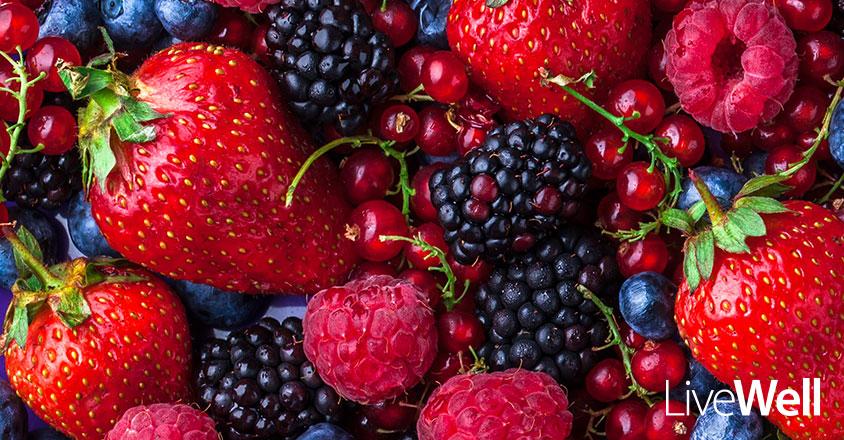
How to pick and store the best summer fruits.
Supporting a loved one with dementia can be both challenging and rewarding. Their world may feel fragmented, but your compassion and approach can make a world of difference. Here’s how you can create meaningful and supportive interactions:
Dementia can cause memory loss, confusion and difficulty expressing thoughts. Slow down conversations and give them time to respond. Rushing or correcting them might frustrate both of you, so focus on creating a calm and reassuring atmosphere.
Your loved one might struggle to recall past events, so try shifting the conversation to the present moment. Enjoy a shared activity like listening to music, taking a walk or looking at family photos together. The goal isn’t to test their memory but to share joy.
According to the Alzheimer’s Society, speak in short sentences and use simple language. Avoid asking open-ended questions like, “What do you want for lunch?” Instead, offer choices: “Would you like soup or a sandwich?” This reduces confusion and helps them feel included.
Additionally stated by the Alzheimer’s Society, dementia can lead to emotional ups and downs. If they seem anxious or upset, acknowledge their feelings with empathy. Statements like, “I see you’re upset. I’m here for you,” can offer comfort.
Correcting their memories or orientation to time can create stress. Instead, gently enter their world. If they believe it’s 1965, talk about what they loved during that time. The connection matters more than the facts.
Appreciate the little victories—whether it’s a laugh, a smile, or a conversation that flows easily. These moments are treasures that help strengthen your bond.
Interacting with a loved one who has dementia takes patience, love, and adaptability. Remember, your presence is more impactful than words. With kindness and understanding, you can create a safe and nurturing environment where they feel valued and loved.
Sign up for our digital newsletters to receive health tips, recipes, success stories for inspiration and information about new doctors to help you on your journey to better health.
Genesis HealthCare System’s Health and Wellness content conveniently provides accurate and helpful information. Your health history and current health may impact suggestions provided through our Health and Wellness content. Although we hope this information is helpful, it is not a substitute for your doctor's medical advice. Before making any significant changes, please consult your doctor.

Supporting a loved one with dementia can be both challenging and rewarding. Their world may feel fragmented, but your compassion and approach can make a world of difference.
Tyler Vanatta had experienced extreme chronic lower back pain since 2012.
Managing a physically demanding career, Tyler served 12 years in the National Guard and has worked as a maintenance supervisor since 2022. The routine strains on his body only increased his discomfort.
“It was a daily challenge to get out of bed and get dressed,” said Tyler. “I returned home after 12-hour shifts feeling more worn down and in more pain.”
Wear and tear combined with disc degeneration resulted in inflammation and pain known as vertebrogenic pain. It’s a pain in the middle of the lower back that worsens when you bend, sit for long periods and are physically active.
After trying suggested medications and treatments for years without success, Tyler was determined to find a form of long-term relief.
Tyler was referred to the Genesis Interventional Pain Management Clinic through the Department of Veterans Affairs outpatient transfer program.
He met with Yahya Bakdalieh, M.D., Physical Medicine and Rehab Physician at Genesis Interventional Management Pain Clinic, and asked about options.
“Tyler’s vertebrogenic low back pain was a specific type of pain that is common and often misdiagnosed,” said Dr. Bakdalieh. “Of the 30 million people in the U.S. with chronic low back pain, one in every six people is likely to have this type of pain. Patients have tried many therapeutic approaches for extended relief, but an effective treatment was only recently developed."
Dr. Bakdaliah introduced Tyler to the Intracept Procedure, a new vertebrogenic low back pain treatment offered at Genesis.
Vertebrogenic pain starts in the endplates. The basivertebral nerve (BVN) in the spine carries pain signals from the inflamed endplates to the brain. When the BVN releases these signals, it results in chronic lower back pain.
Parts of a vertebrae.
Intracept treats the BVN to stop the pain signals. During the minimally invasive procedure, an X-ray locates the nerve. A tiny device sends radio waves to heat the nerve so it no longer senses pain.
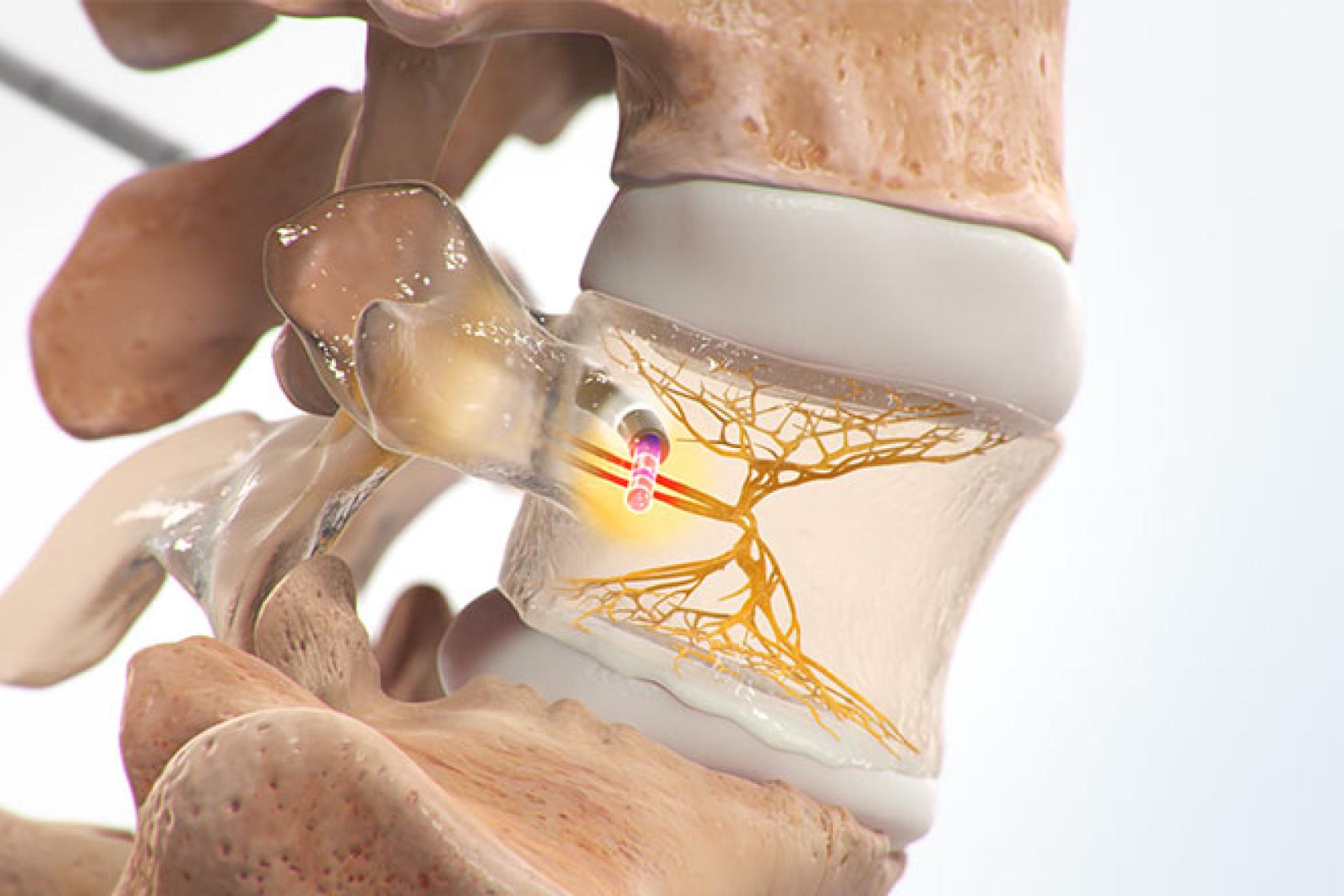
Treatment to the basivertebral nerve.
Lasting around an hour, the outpatient procedure is implant-free and preserves the spine's structure.
“Intracept is the only current Federal Drug Administration-cleared treatment for chronic vertebrogenic low back pain,” said Dr. Bakdaliah. "With this new innovative technology, we can treat the endplates where the pain originates.”
A normal disc.
An inflamed disc with endplate damage.
“I was confident in what I learned about Intracept,” said Tyler. “I couldn’t wait to have the procedure.”
Tyler had the Intracept Procedure at Genesis in October 2024. After a few days of rest, he returned to work and has remained pain-free since the treatment.
“Getting out of bed now is the most amazing thing,” said Tyler. “I used to take 40 minutes to get dressed. I’m now out the door in five minutes.”
In Intracept clinical studies, most patients have experienced sustained relief over five years after a single treatment:
One-third of patients reported up to 50% pain reduction.
One-third of patients reported up to 99% pain reduction.
One-third of patients reported they are 100% pain-free.
Genesis is one of the first healthcare systems in the area to offer the Intracept Procedure. Tyler has shared his positive experience with many people, including his coworkers.
“Maintenance workers are all beat up,” said Tyler. “The information is saved on my phone. I’ve already recommended Intracept to 12 people.”
Tyler’s newfound relief has him embracing old hobbies and finding new ones, including a bucket list purchase.
“I felt so good after my procedure that I went and bought a motorcycle,” said Tyler. “I can’t wait to ride this season.”

Yahya Bakdalieh, M.D.
Physical Medicine and Rehab Physician
Genesis Interventional Pain Management Clinic
Genesis HealthCare System’s Health and Wellness content conveniently provides accurate and helpful information. Your health history and current health may impact suggestions provided through our Health and Wellness content. Although we hope this information is helpful, it is not a substitute for your doctor's medical advice. Before making any significant changes, please consult your doctor.

Kettlebell workouts have become a popular form of strength training. Using a ball-shaped weight with a short U-shaped handle, exercises are performed by swinging the kettlebell in various intensities and repetitions. The resistance from the weight helps build muscle.
Kettlebell workouts are an easy and affordable way to work out at home without going to a gym. Several muscles are used in a single kettlebell swing, including your core, quads, hamstrings and glutes.
The Mayo Clinic suggests that free weights, like kettlebells, dumbbells and barbells, are a good way to mix up forms of strength training.
Vanderbilt Health and the National Library of Medicine outline benefits of kettlebell workouts, including:
Improved posture.
Better bone mass density.
Aligning joints.
Activating your core.
Muscle development.
Range of motion.
Improved flexibility and coordination.
Better endurance and athletic performance.
Mental well-being.
Kettlebells come in various weights and colors, which can look confusing before you pick one to start. You can find kettlebells as light as a few pounds and even over 100 pounds. It’s important to use the proper weight for your experience and strength level. Don’t hesitate to check with a fitness professional for the best size before purchase.
The basic kettlebell exercise is the standard swing. Harvard Health offers these beginner tips:
Start with your feet around shoulder-width apart. Toes should be facing forward.
Pick up the kettlebell with both hands. Hinge your hips back, as if you’re going to sit down.
Holding the kettlebell between your legs, stand up and swing the kettlebell. Making sure your hips don’t hinge too far forward, your glutes should be tightened and the weight should swing no higher than eye-level.
Return the swing between your legs.
Repeat 8-12 times. Be sure to keep your back straight to avoid injury.
As you become more advanced, you can slowly increase the weight of your kettlebell for harder challenges. There are variations of swings to try as well, including single-arm and crossbody techniques. Kettlebells can also be used for different curls and lifts.
Consider giving kettlebells a try for your next workout. While swinging a weight might sound easy, it’s likely you’ll soon feel the benefits if performed properly.
Sign up for our digital newsletters to receive health tips, recipes, success stories for inspiration and information about new doctors to help you on your journey to better health.
Genesis HealthCare System’s Health and Wellness content conveniently provides accurate and helpful information. Your health history and current health may impact suggestions provided through our Health and Wellness content. Although we hope this information is helpful, it is not a substitute for your doctor's medical advice. Before making any significant changes, please consult your doctor.
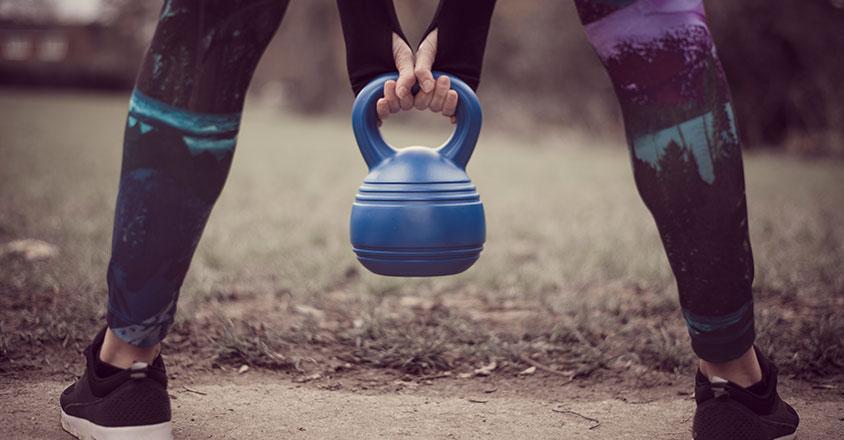
Kettlebell workouts are an easy and affordable way to work out at home without going to a gym.
Farmers’ markets, produce stands and backyard gardens are some of the best places to get seasonal fruits and vegetables. In fall, we eagerly visit apple orchards to pick, or pick up, a bushel or a peck (we love both). With our freshly picked fruits, pumpkins, squash and other fresh root vegetables, we make seasonal salads, pies and other delicious dishes from recipes passed down through generations. Aside from pleasing your tastebuds, there are benefits to eating what’s in season.
Seasonal food is typically fresher, tastier and more nutritious than eating it when it’s out of season. Vegetables and fruits out of season in our area are typically picked early to ripen on the long journey to our grocery stores. Researchers at Montclair State University found that the vitamin C content of broccoli is cut in half when it’s shipped out of the country compared to when it’s sourced locally.
Locally grown fruits and vegetables last longer in the fridge and on countertops. That’s because they’re harvested and in your hands well before produce from a different state or country. Produce that can fully ripen on the vine has more nutrients, making it healthier for us to eat. Buying local produce tastes better, lasts longer and has a higher nutritional value. That sounds like a win-win-win.
There are plenty of delicious, nutritious foods harvested this time of year. Here’s a list that includes the vitamins and minerals in many fall favorites, courtesy of the United States Department of Agriculture:
Apples – a great source of vitamin C, fiber and antioxidants.
Cabbage – contains antioxidants, calcium and vitamin B.
Cauliflower – a good source of folate, vitamins B, C and potassium.
Potatoes – a good source of potassium and vitamin C.
Pumpkins – rich in vitamins A, B1, B6, C and E, potassium and the antioxidant beta carotene.
Winter Squash– rich in vitamins A and C.
Supporting local farmers is good for the economy and our health. It’s also reassuring to know where our food comes from by buying locally.
Genesis HealthCare System’s Health and Wellness content conveniently provides accurate and helpful information. Your health history and current health may impact suggestions provided through our Health and Wellness content. Although we hope this information is helpful, it is not a substitute for your doctor's medical advice. Before making any significant changes, please consult your doctor.

Aside from pleasing your tastebuds, there are benefits to eating what’s in season.
Are you planning a fall cruise, road trip or vacation? Don’t let motion sickness bring your plans to a halt. It’s reported that one in three people are prone to motion sickness, so it’s a good idea to be prepared before you hit the road (or the high seas.)
According to the Centers for Disease Control and Prevention, motion sickness happens when the movement you see with your eyes is different than the movement your inner ears sense. This mishap can result in dizziness, nausea, irritability and even vomiting. Yuck. Thankfully, there are ways to ease your symptoms and maybe prevent them altogether.
If you’re in a car or bus, try to sit as close to the front as possible. Facing the direction you’re traveling and focusing on a non-moving object can ease your queasiness.
If you’re on a boat, cruise ship or airplane, stick to the middle of the vessel. This will help reduce the ups and downs of the water or air.
Hydration helps. Avoid alcoholic beverages and caffeine until the chance of motion sickness subsides.
Bring lozenges or mints to ease your tummy.
Listen to music to distract yourself.
Children are especially at risk of suffering from motion sickness, and it appears to run in families. There are hundreds of parent posts on social media dedicated to both natural and medicinal remedies. Many parents says that it’s often a case of trial-and-error to find something that works. Check with your family doctor if giving an over-the-counter product to a child under the age of 18 is suggested.
According to a 2018 study published in the National Library of Medicine, antihistamines with the lowest level of sedation are the treatment of choice for adults experiencing vertigo, nausea and vomiting.
The U.S. Travel Association predicts domestic leisure travel will increase through 2024. Hopefully, you’ll be taking a trip to see friends, spend time with family or visit a destination you’ve always wanted to explore. Bookmark this article to keep motion sickness at bay when you’re on an adventure.
Genesis HealthCare System’s Health and Wellness content conveniently provides accurate and helpful information. Your health history and current health may impact suggestions provided through our Health and Wellness content. Although we hope this information is helpful, it is not a substitute for your doctor's medical advice. Before making any significant changes, please consult your doctor.

Are you planning a fall cruise, road trip or vacation? Don’t let motion sickness bring your plans to a halt.
Approved by:
Maurine Maneely,
Registered Dietitian
Find more recipes at genesishcs.org/eatwell.
Genesis HealthCare System’s Health and Wellness content conveniently provides accurate and helpful information. Your health history and current health may impact suggestions provided through our Health and Wellness content. Although we hope this information is helpful, it is not a substitute for your doctor's medical advice. Before making any significant changes, please consult your doctor.
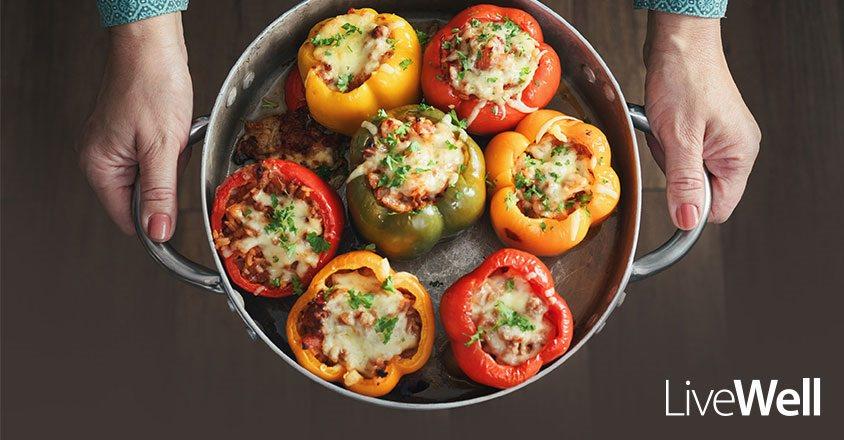
Try this delicious fall recipe.
The question, “Got milk?” now comes with a follow-up question: “What kind of milk?” Due to dietary allergies, intolerances, diet preferences and environmental concerns, many people are turning from cow’s milk and drinking plant- and nut-based milk alternatives. The number of people with dairy-related digestive issues continues climbing. Experts estimate that 68% of the world’s population struggles with lactose absorption.
Thankfully, in recent years, a plethora of milk replacements have become available and accessible. Dairy-free milk products span from soy, coconut, almond, oat, rice, pea, hemp and quinoa bases. These diverse dairy-free products come in various brands, product types and flavors, which also means a variety in nutritional value.
In April 2022, McGill University published a new study comparing the nutrition in cow’s milk to the four most common milk alternatives: almond, rice, soy and coconut milks. While cow’s milk came out with the highest nutritional value, researchers recognized unsweetened soy milk as the most nutritious dairy-free milk option.
In the McGill University study, researchers found that pea- based drinks contained the most phosphorus (which helps create, maintain and repair tissues and cells), selenium (which helps make DNA and protects against infections) and zinc (which helps create DNA, builds proteins and supports a healthy immune system).
The study also showed that soy milk contained the most magnesium (which supports our muscle and nerve functions) and protein.
Nutritional value varies from brand to brand amongst dairy-free milks. Even within the same alternative milk base and the same brand, there are differences. That’s why it’s important to read labels carefully. While manufacturers may fortify some dairy- free milks with vitamins and minerals, others come with added sugars or artificial sweeteners. For example, many almond and hemp milks contain 13 g of sugar per cup. Paying close attention to labels will help you milk the most nutrition out of your milk alternative.
Genesis HealthCare System’s Health and Wellness content conveniently provides accurate and helpful information. Your health history and current health may impact suggestions provided through our Health and Wellness content. Although we hope this information is helpful, it is not a substitute for your doctor's medical advice. Before making any significant changes, please consult your doctor.
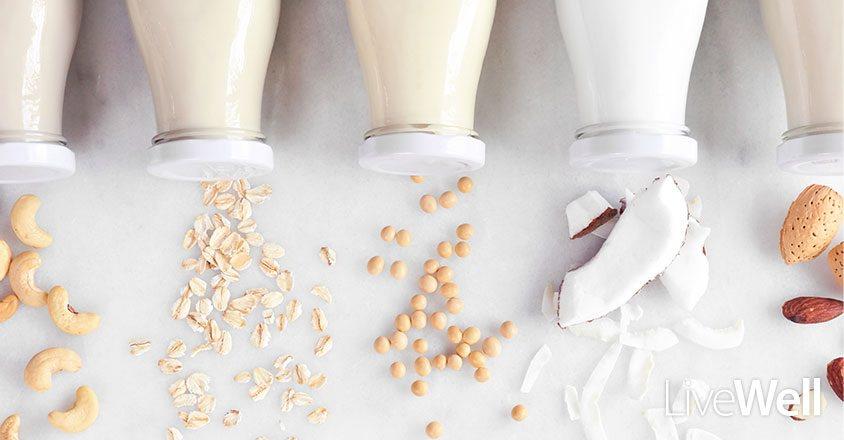
Discover the healthiest milk alternative.
Your feet do a lot of work. Whether walking, standing or exercising, your feet put in long hours. Here’s a look at some of the most common foot problems for women and ways to reduce foot pain.
Genesis HealthCare System’s Health and Wellness content conveniently provides accurate and helpful information. Your health history and current health may impact suggestions provided through our Health and Wellness content. Although we hope this information is helpful, it is not a substitute for your doctor's medical advice. Before making any significant changes, please consult your doctor.
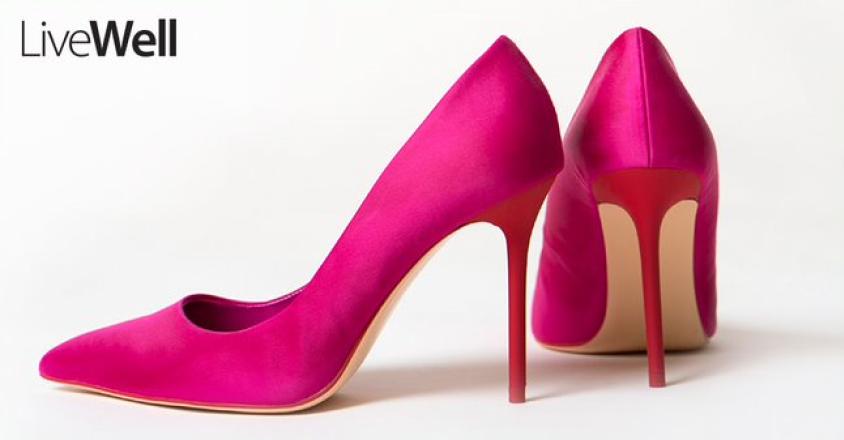
Here’s a look at some of the most common foot problems for women and ways to reduce foot pain.